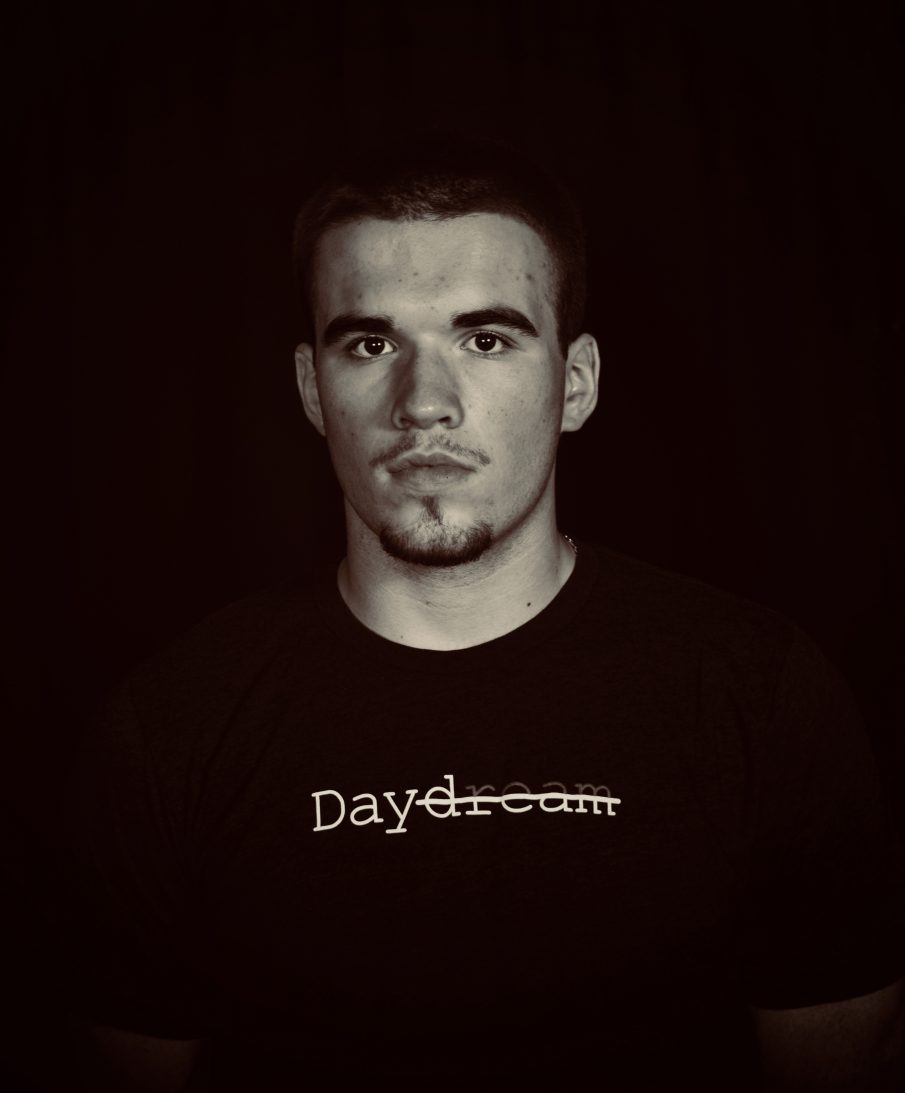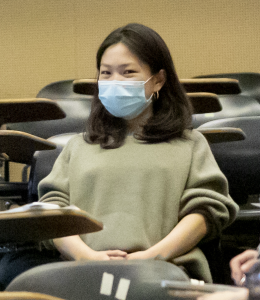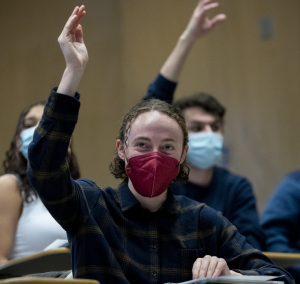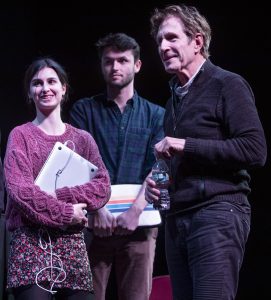By Isaiah Saunders (BFF 2019, Bates Class of 2021)
So, what is the Bates Film Festival? The Bates Film Festival is truthfully one of the most rewarding experiences I have ever been a part of. This past fall (2019), Bates hosted its second Film Festival right here on campus – attracting greater participation from students and the community than the 2018 festival. The BFF is an event that embodies what makes Bates the great institution it is. The festival spotlights a broad range of narratives and documentaries that highlight different cultures, religions, and power dynamics. Important social issues are beautifully articulated on screen for us to enjoy, dissect, and discuss for months, if not years, after witnessing them. My name is Isaiah Saunders, a member of the 2019 Board of Directors for the festival. I am a Rhetoric major and Theatre minor here at Bates. This past fall, I was blessed with the opportunity to be one of a select group to help plan, execute, and attend such a fulfilling experience. In the following blog, I want to talk about my experience with the festival, in order to shine a light on my story and how this experience has helped to inspire me as I look to the future.
Part One, Ideas and Brainstorm:

Running a film festival is a lot like producing a film. First, you have to find your inspiration for the story you want to tell. Throughout the first half of the year, we had a lot of discussion about what exactly we wanted the theme of the festival to be. Prevalent themes of gender/racial identity and equity seemed to be at the forefront of our discussion. These same issues continue to preoccupy other festivals such as the Sundance Film Festival in Park City, Utah. In a 2019 article Dino-Ray Ramos of DEADLINE wrote, “Of the women and people of color who directed top-grossing films in recent years, 30-35% had prior support from Sundance… in 2019, 55% of accepted short films and 38% of accepted dramatic features had a director of color. 18% of accepted projects, across features, episodics, and shorts, were directed by one or more women of color.” These statistics highlight an issue that the Bates Film Festival hoped to address. Our mission statement emphasized that we hoped to “foster an appreciation for the artistry of screen media; and present work that serves as a platform for productive discussions of topical social and political issues.” It was our hope to have a plethora of social and political backgrounds represented in the films we selected. We actively sought films that had both women and people of color serving in prominent positions on the production and represented on screen. Many of the films we selected and many of the artists whose work we highlighted spoke directly to the priorities outlined in our mission statement.
After finding our inspiration, we began to conduct research. In this instance, how could we best promote platforms for topical social and political issues? I took part in the selection of narrative films, both feature and short, that would best embody these tropes. During our weekly nighttime screenings, I watched a series of films that most people, especially those outside of the festival world, will likely never see. It was like being a kid in the movie theatre all over again, minus the candy and popcorn. Later on, I will go into depth about one film in particular from the festival that resonated with me, but at this point in the year, we were still not ready to pull off a successful festival.
“Many of the films we selected and many of the artists whose work we highlighted spoke directly to the priorities outlined in our mission statement.”
Part Two, Sponsorships & Pre-Production:

Before any successful execution of a festival, Professor Cavallero placed specific emphasis on the importance of sponsorships and marketing. Within the first couple of weeks, I reached out to both my professional and faculty advisory board members – who both were able to help me in different realms of the festival. The first person to recognize is American television director Steven DePaul (P ‘17), who has been in the professional film industry for years. Steven and I talked a few times throughout the semester, discussing topics centered on both our personal and professional lives, including what does and doesn’t work in film festivals. What resonated most with me from Mr. DePaul were his closing remarks the last time I spoke to him on the phone. He told me to “have fun and love what you do… people will come if you are engaging and confident in the product you produce.” I have carried these words close to me both in planning the festival and in my personal pursuits as an aspiring filmmaker.

Next, I wish to acknowledge Bates Associate Professor of Psychology Michael Sargent, who studies social psychology, or the study of how people think, feel, and behave. I met with Professor Sargent a few times, including a lunch meeting where we got lost in a discussion of topics beyond just Bates and the film festival. Having never taken a class with Professor Sargent, his expertise in the realm of social psychology inspired my ideas for a panel discussion about social and political issues surrounding the topic of ‘how do we identify.’ A variety of films the class watched engaged with themes of self/group identity. Professor Sargent also premiered his documentary film Witchcraft Blue at the 2018 Bates Film Festival – a director of color articulating themes of self-identity of women in the niche community of burlesque entertainment. This was the first film I attended at the 2018 festival, a strange coincidence that perhaps wasn’t by accident.
While I was having discussions with DePaul and Sargent, my classmates were reaching out to board members with ideas for panels, contacts with featured guests, expertise in poster design, and other topics. We also reached out to various departments, programs, offices, and individuals around campus and beyond to secure financial support for the festival. In total, the 2019 festival secured 34 co-sponsorships, around ten more than the previous year. These sponsors did more than just aid in the development of the festival, many also acted as mentors that gave the class real-world experience and perspectives on this field of media and screen studies. This was unlike any other class I have taken. This upward trend in sponsorships cements that what this festival is doing for the community is working. With repetition, growth, and expansion, I believe this festival will flourish in the years to come.
Part Three, Showtime & Review:
Only ten weeks after entering the course, it was time for me to take part in the first film festival I helped to organize. The events we planned varied from virtual reality titles to panel discussions to short film blocks and even a Moroccan dinner and a movie night. Attendance varied from event to event. We learned that paper ballots were better than electronic voting for audience awards. We generally agreed that more engagement from faculty would have helped with turnout. And that advertising around campus would help increase attendance. All of these realizations aside, the festival was able to expose our audience to films that they likely would never have seen if it wasn’t for our board of directors, our professional advisory board, our faculty board, our sponsorships, and Professor Jon Cavallero.
“Only ten weeks after entering the course, it was time for me to take part in the first film festival I helped to organize.”
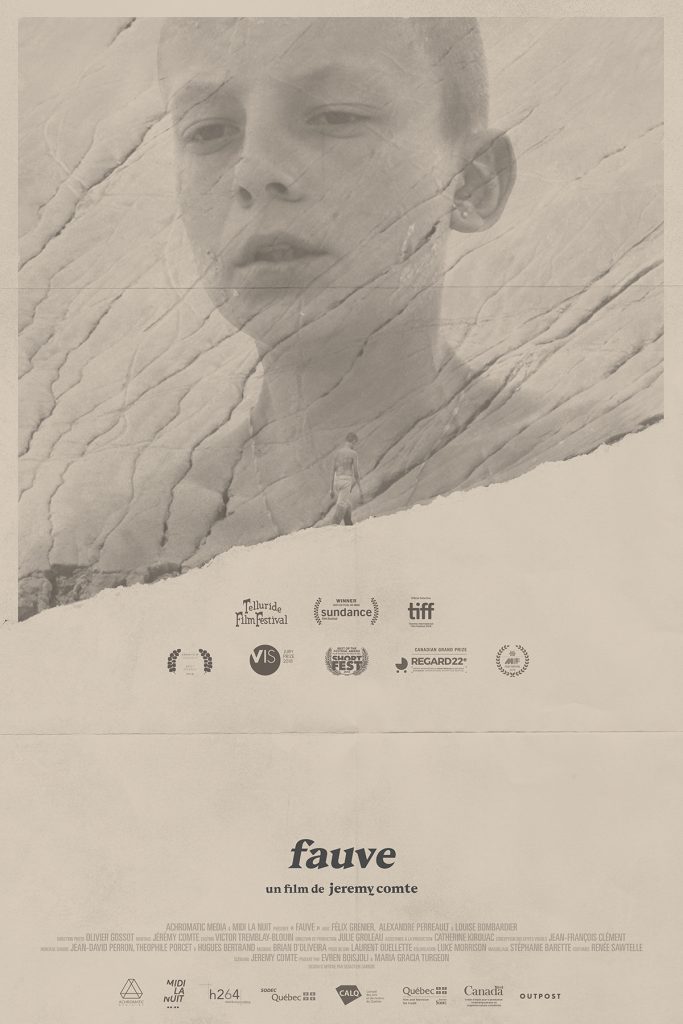
I wanted to take some time now and review one film that most resonated with me. Fauve (2018, 17 minutes) is a short film by Canadian filmmaker Jeremy Comte. Comte’s inspiration came from a recurring dream he had as a child. The film follows two mischievous boys as they test their dominance through playful mind games. The film engages issues of innocence and grief, and the cinematography, use of sound, and character development are second to none. Shots from the beginning and end are the only scenes with vibrant color, as the grey color scale sets the tone for most of the film’s duration. Some have found the film problematic either because it is not “relatable,” or because it is thought to be too masculine. The film is very niche, and has only one woman in its cast, but all that aside, the story offers more than just a base for male viewers to reminisce about playing outside with their friends as kids. Fauve is a vulnerable, bone-chilling experience of child’s play that I recommend watching time and time again for its filmmaking artistry and acting.
Final Remarks:
In total, the 2019 Bates Film Festival lineup featured 32 directors across 26 films. Films made by directors from marginalized backgrounds accounted for a significant portion of the titles we screened. The festival experience, beyond just here at Bates, should be something everyone exposes themselves to at least once in their lifetime. I hope that this showcase of diversity from the festival and the upward trend of sponsorship and attendance continues in the years to come. Professor Jon Cavallero and his 300-level “Film Festival Studies” class can learn from this year’s festival to ensure that the coming festivals are even more diverse and engaging than the ones prior. I will forever remember this Bates Film Festival as one of the most unique and engaging educational experiences I have been a part of. Thank you for taking the time to read my side of the festival’s story. I hope that you give yourself some time to look into films such as Fauve, and all the other films (past, present, and future) that have screened (or will screen) at the Bates College Film Festival.
Works Cited
Ramos, Dino-Ray. “Sundance Increases Representation For Women & People of Color With Plenty of Room for Improvement – Study.” Deadline, 25 Jan. 2019, https://deadline.com/2019/01/sundance-usc-annenberg-inclusion-initiative-inclusion-representation-women-people-of-color-study-dr-stacey-l-smith-1202541174/. Accessed 11 Jun. 2019.

